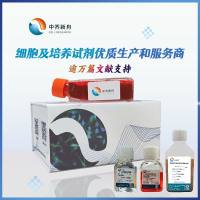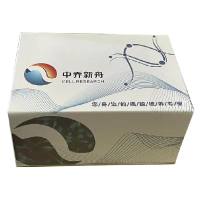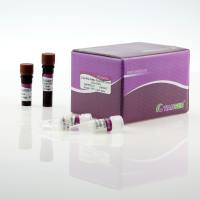PCR常见问题的精辟总结--耶鲁大学
互联网
Troubleshooting for PCR and multiplex PCR
Troubleshooting discussion is based on the PCR protocol as described in the table below. All reactions are run for 30 cycles.
COMPONENT VOLUME FINAL CONCENTRATION
1.autoclaved ultra-filtered water (pH 7.0) 20.7µL -
2.10x PCR Buffeundefined 2.5µL 1x
3.dNTPs mix (25 mM each nucleotide) 0.2µL 200 µM (each nucleotide)
4.primer mix (25 pmoles/µL each primer) 0.4µL 0.4 µM (each primer)
5.Taq DNA polymerase (native enzyme) 0.2µL 1 Unit/25 µL
6.genomic DNA template (100 ng/µL) 1.0µL 100 ng/25 µL
QUESTIONS SOLUTIONS
1. I get (many) longer unspecific products. What can I do?
Decrease annealing time
Increase annealing temperature
Decrease extension time
Decrease extension temperature to 62-68º C
Increase KCl (buffer) concentration to 1.2x-2x, but keep MgCl2 concentration at 1.5-2mM.
Increase MgCl2 concentration up to 3-4.5 mM but keep dNTP concentration constant.
Take less primer
Take less DNA template
Take less Taq polymerase
If none of the above works: check the primer for repetitive sequences (BLAST align the sequence with the databases) and change the primer(s)
Combine some/all of the above
2. I get (many) shorter unspecific products. What can I do?
Increase annealing temperature
Increase annealing time
Increase extension time
Increase extension temperature to 74-78º C
Decrease KCl (buffer) concentration to 0.7-0.8x, but keep MgCl2 concentration at 1.5-2mM
Increase MgCl2 concentration up to 3-4.5 mM but keep dNTP concentration constant
Take less primer
Take less DNA template
Take less Taq polymerase
If none of the above works: check the primer for repetitive sequences (BLAST align the sequence with the databases) and change the primer(s)
Combine some/all of the above
3. Reaction was working before, but now I can't get any product. Make sure all PCR ingredients are taken in the reaction (buffer, template, Taq, etc)
Change the dNTP solution (very sensitive to cycles of thawing and freezing, especially in multiplex PCR)
If you just bought new primers, check for their reliability (bad primer synthesis ?)
Increase primer amount
Increase template amount
Decrease annealing temperature by 6-10º C and check if you get any product. If you don't, check all your PCR ingredients. If you do get products (including unspecific ones) reaction conditions as described above.
Combine some/all of the above
4. My PCR product is weak. Is there a way to increase the yield? Gradually decrease the annealing temperature to the lowest possible.
Increase the amount of PCR primer
Increase the amount of DNA template
Increase the amount of Taq polymerase
Change buffer (KCl) concentration (higher if product is lower than 1000bp or lower if product is higher than 1000bp)
Add adjuvants. Best, use BSA (0.1 to 0.8 µg/µL final concentration). You can also try 5% (v/v, final concentration) DMSO or glycerol.
Check primer sequences for mismatches and/or increase the primer length by 5 nucleotides
Combine some/all of the above
5. My two primers have very different melting temperatures (Tm) but I cannot change their locus. What can I do to improve PCR amplification?
An easy solution is to increase the length of the primer with low Tm. If you need to keep the size of the product constant, add a few bases at the 3' end. If size is not a concern, add a few bases at either the 3' or the 5' end of that primer.
6. I have a number of primer pairs I would like to use together. Can I run a multiplex PCR with them?. How?
Very likely, yes.
Try amplify all loci seaprately using the same PCR program. If one of the primer pairs yields unspecific products, keep the cycling conditions constant and
change other parameters as mentioned above (#1 and #2).
Mix equimolar amounts of primers and run the multiplex reaction either in the same cycling conditions or by decreasing only the annealing temperature by 4ºC.
If some of the loci are weak or not amplified, read below !!
7. How many loci can I amplify in multiplex PCR at the same time?
Difficult to say. The author has routinely amplified from 2 to 14 loci.
Literature describes up to 25 loci or so.
8. One or a few loci in my multiplex reaction are very weak or invisible. How can amplify them?
The first choice should be increasing the amount of primer for the "weak" loci at the same time with decreasing the amount of primer for all loci that can be
amplified. The balance between these amounts is more important than the absolute values used !!.
Check primer sequences for primer-primer interactions
9. Short PCR products in my multiplex reaction are weak. How can I improve their yield?
Increase KCl (buffer) concentration to 1.2x-2x, but keep MgCl2 concentration at 1.5-2mM
Decrease denaturing time
Decrease annealing time and temperature
Decrease extension time and temperature
Increase amount of primers for the "weak" loci while decreasing the amount for the "strong" loci.
Add adjuvants. Best, use BSA (0.1 to 0.8 µg/µL final concentration). You can also try 5% (v/v, final concentration) DMSO or glycerol
Combine some/all of the above
10. Longer PCR products in my multiplex reaction are weak. How can I improve their yield?
Decrease KCl (buffer) concentration to 0.7-0.8x, but keep MgCl2 concentration at 1.5-2mM
Increase MgCl2 concentration up to 3-4.5 mM but keep dNTP concentration constant.
Increase denaturing time
Increase annealing time
Decrease annealing temperature
Increase extension time and temperature
Increase amount of primers for the "weak" loci while decreasing the amount for the "strong" loci
Add adjuvants. Best, use BSA (0.1 to 0.8 µg/µL final concentration). You can also try 5% (v/v, final concentration) DMSO or glycerol
Combine some/all of the above
11. All products in my multiplex reaction are weak. How can I improve the yield?
Decrease annealing time in small steps (2º C)
Decrease extension temperature to 62-68º C
Increase extension time
Increase template concentration
Increase overall primer concentration
Adjust Taq polymerase concentration
Change KCl (buffer) concentration, but keep MgCl2 concentration at 1.5-2mM
Increase MgCl2 concentration up to 3-4.5 mM but keep dNTP concentration constant.
Add adjuvants. Best, use BSA (0.1 to 0.8 µg/µL final concentration). You can also try 5% (v/v, final concentration) DMSO or glycerol
Combine some/all of the above
12. Unspecificproducts appear in my multiplex reaction. Can I get rid of them somehow?
If long: increase buffer concentration to 1.2-2x, but keep MgCl2 concentration at 1.5-2mM
If short: decrease buffer concentration to 0.7-0.9x, but keep MgCl2 concentration at 1.5-2mM
Gradually increase the annealing temperature
Decrease amount of template
Decrease amount of primer
Decrease amount of enzyme
Increase MgCl2concentration up to 3-4.5 mM but keep dNTP concentration constant
Add adjuvants.Best, use BSA (0.1 to 0.8 µg/µL final concentration). You can also try 5% (v/v, final concentration) DMSO or glycerol
If nothing works: run PCR reactions for each (multiplexed) locus individually, using an annealing temperature lower than usual. Compare the unspecific
products for each locus tested with the unspecific products seen when running the multiplex PCR. This may indicate which primer pair yields the unspecific
products in the multiplex reaction.
Combine some/all of the above
(Note: primer-primer interactions in multiplex PCR are usually translated into lack of some amplification products rather than the appearance of unspecific products)









